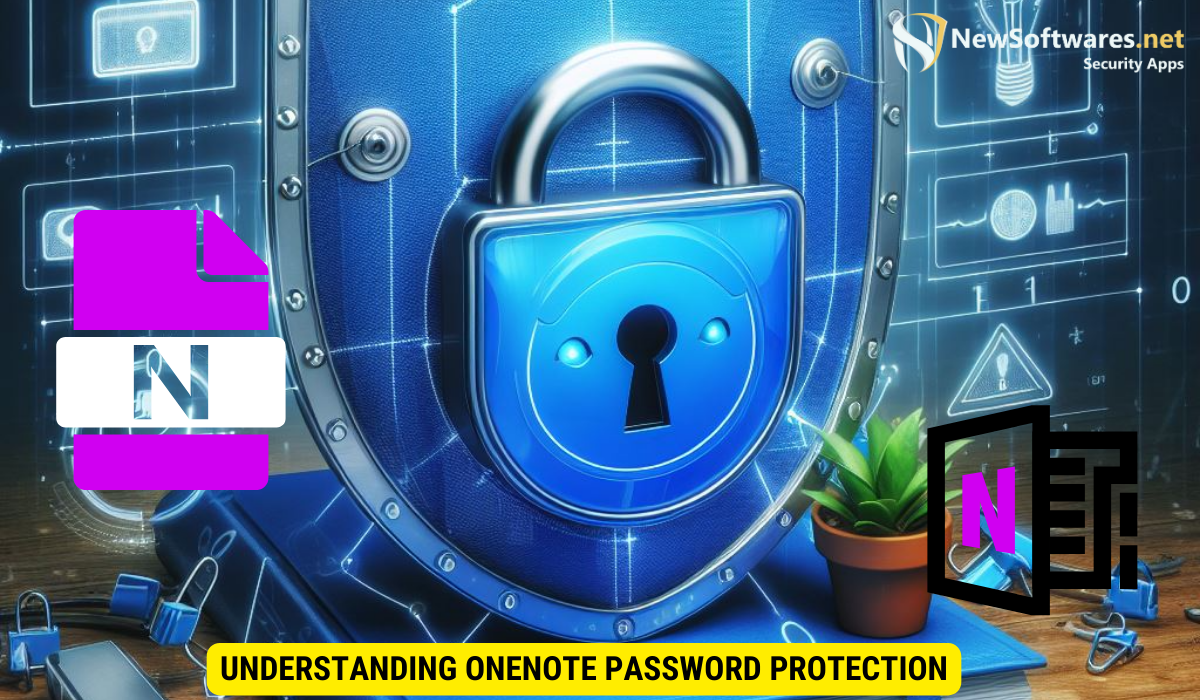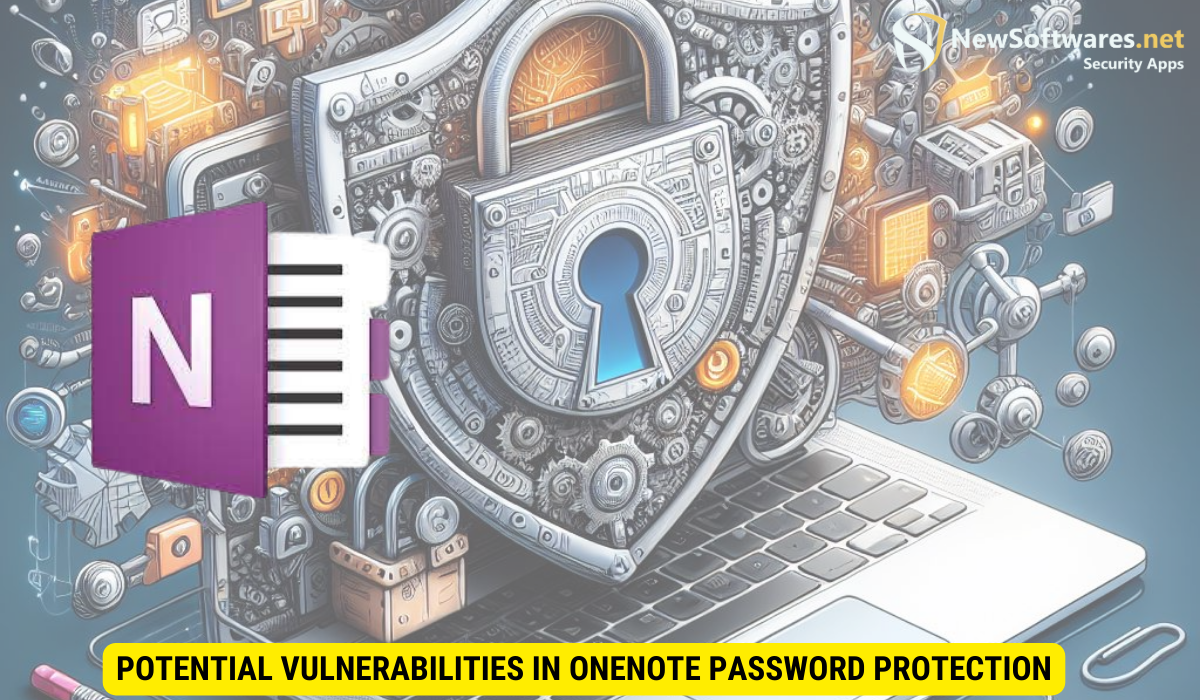OneNote’s password protection feature utilizes strong encryption algorithms to secure data, but Microsoft does not provide an official password recovery mechanism if it’s forgotten due to encryption measures.
In the ever-evolving digital landscape, protecting our personal information is of paramount importance. One essential tool that many individuals and organizations rely on for note-taking and organization is Microsoft OneNote. With its robust features and seamless integration into the Microsoft Office suite, OneNote has become increasingly popular. But how secure is the password protection offered by this software? Together, we will delve deep into the security measures employed by OneNote and analyze its strengths and vulnerabilities.
Understanding OneNote Password Protection

The Basics of OneNote Password Protection
Before we discuss the intricacies of OneNote’s password security, let’s start by understanding the basics. OneNote allows users to protect their notes by assigning a password to a specific section or notebook. This password serves as a barrier, preventing unauthorized individuals from accessing the protected content.
By encrypting the notes, OneNote ensures that even if an attacker gains access to the file, they will not be able to view its contents without the correct password. This encryption technology provides an additional layer of security and peace of mind.
OneNote’s password protection feature is particularly useful for users who store sensitive information or personal data in their notebooks. Whether it’s confidential work notes, personal journals, or important project details, having the ability to secure this information with a password adds a sense of control and privacy to the user’s digital workspace.
The Technical Aspects of OneNote Password Protection
Digging deeper, let’s explore the technical aspects of OneNote’s password protection. When a user assigns a password to a section or notebook, OneNote uses strong encryption algorithms to secure the data. These algorithms, such as AES-256 (Advanced Encryption Standard), are widely regarded as highly secure and practically unbreakable.
The password itself is not stored directly in the OneNote file but is used to generate a cryptographic key. This key is then used to encrypt and decrypt the data within the file. By employing this approach, OneNote ensures that the password is not exposed, reducing the risk of unauthorized access.
Furthermore, OneNote’s password protection feature extends beyond just securing individual sections or notebooks. Users can also set different passwords for various sections within the same notebook, allowing for granular control over access rights. This level of customization enables users to tailor their security settings based on the sensitivity of the information stored in each section.
The Strength of OneNote Passwords
The Role of Encryption in Password Strength
One fundamental aspect of password strength lies in the encryption algorithms employed. As mentioned earlier, OneNote utilizes robust encryption algorithms to protect its data. This ensures that even if an attacker attempts to brute force the password, the encryption algorithms’ strength will prevent them from gaining access. Therefore, the encryption plays a crucial role in the overall strength of OneNote passwords.
The Impact of Password Complexity
When it comes to password security, complexity is key. A strong password should incorporate a combination of uppercase and lowercase letters, numbers, and special characters. By creating complex passwords, users can significantly increase the security of their OneNote data, making it more challenging for potential attackers to guess or crack the password.
It is worth noting that OneNote does not enforce password complexity requirements. While this provides flexibility for users, it also means that the responsibility lies solely with them to create strong, complex passwords.
Potential Vulnerabilities in OneNote Password Protection

Common Exploits and Their Consequences
No software is immune to vulnerabilities, and OneNote is no exception. While it offers robust security measures, there are still potential vulnerabilities that users should be aware of. One common exploit is the use of weak passwords. If a user chooses a password that is easily guessable or shares it with others, it compromises the effectiveness of OneNote’s password protection.
Another vulnerability lies in the physical security of the device. If an attacker gains physical access to a device with an unlocked OneNote application, they can bypass the password protection altogether. Therefore, it is crucial to ensure that the device itself is adequately secured and protected.
The Risk of Password Reuse
Password reuse is a risky habit that can have severe consequences. If a user employs the same password for multiple accounts, a breach or compromise in one account can potentially expose all the others. This is especially true if the same password is used for both OneNote and other sensitive accounts, such as online banking or email.
To mitigate the risk of password reuse, it is advisable to use unique passwords for each online account and regularly update them. Additionally, utilizing a password manager can simplify the process of managing multiple passwords securely.
Enhancing OneNote Password Security
Best Practices for Creating Strong Passwords
To enhance the security of OneNote passwords, it is critical to follow best practices for creating strong passwords. As mentioned earlier, incorporating a combination of uppercase and lowercase letters, numbers, and special characters is essential. Additionally, avoiding common and easily guessable information, such as birthdates or pet names, can further strengthen the password.
Regularly updating passwords and refraining from sharing them with others are also vital practices to adopt. By adhering to these best practices, users can significantly enhance the security of their OneNote data.
Additional Security Measures for OneNote
While password protection is an essential aspect of OneNote security, there are additional measures users can take to further safeguard their data. Some options include enabling two-factor authentication (2FA), which adds an extra layer of verification, and regularly backing up OneNote files to prevent data loss in case of unexpected events.
Additionally, users can consider utilizing encryption software to encrypt the entire device or specific folders where OneNote files are stored. This provides an additional layer of protection, ensuring that even if an attacker gains access to the device, the encrypted files remain inaccessible.
The Future of OneNote Password Protection
Upcoming Security Features in OneNote
Microsoft is committed to continuously improving the security of its software, and OneNote is no exception. While specific details may vary, Microsoft regularly releases updates and enhancements to address security vulnerabilities and improve the overall protection of OneNote.
Future security features may include advanced encryption algorithms, enhanced password complexity requirements, and tighter integration with other security technologies. This ongoing development aims to ensure that OneNote remains a robust and secure solution for note-taking and organization.
The Role of Biometrics in OneNote Security
Biometric authentication, such as fingerprint or facial recognition, has become increasingly prevalent in modern devices. Integrating biometrics into OneNote’s password protection could provide an additional layer of security. By utilizing unique biological markers as authentication factors, users can further enhance the security of their OneNote data.
While the future of biometric integration in OneNote remains speculative, the rapid advancement of biometric technology suggests it could become a viable security measure in the near future.
Key Takeaways
- OneNote employs strong encryption algorithms to secure users’ data.
- The strength of OneNote passwords relies on encryption and password complexity.
- Weak passwords and physical device security pose potential vulnerabilities to OneNote password protection.
- Users can enhance OneNote password security by creating strong passwords and avoiding password reuse.
- Additional security measures, such as two-factor authentication and encryption software, can further safeguard OneNote data.
FAQs
Can I recover a forgotten OneNote password?
Unfortunately, if you forget your OneNote password, Microsoft does not provide an official password recovery mechanism due to the encryption measures in place. It is essential to keep a record of your passwords in a secure location or utilize a password manager to prevent password loss.
Does enabling two-factor authentication affect OneNote usability?
Enabling two-factor authentication adds an extra layer of security but should not significantly impact the usability of OneNote. Once the two-factor authentication is set up, you will need to provide an additional verification factor, such as a code or biometric scan, in addition to your password when logging in.
What should I do if I suspect unauthorized access to my OneNote?
If you suspect unauthorized access to your OneNote, you should take immediate action to protect your data. Change your password to a strong, unique one and consider enabling two-factor authentication. Additionally, review your account activity and report any suspicious modifications or access to Microsoft support.
Can I password protect individual OneNote sections within a notebook?
Yes, OneNote allows users to password protect individual sections within a notebook. This provides added flexibility in securing specific sensitive or confidential information while maintaining accessibility to other sections.
When should I consider using encryption software in addition to OneNote’s password protection?
Utilizing encryption software in addition to OneNote’s password protection may be advisable in situations where users require an extra layer of security. If you have highly sensitive or confidential information stored in OneNote, encrypting the entire device or specific folders where OneNote files are stored can provide an additional safeguard against unauthorized access.
Conclusion
In conclusion, OneNote’s password protection employs robust encryption algorithms, ensuring the security of users’ data. To enhance the strength of OneNote passwords, users should create complex passwords and avoid password reuse. Additionally, utilizing additional security measures, such as enabling two-factor authentication and backing up OneNote files, further enhances data protection. As Microsoft continues to develop and enhance OneNote, future security features, including advanced encryption and biometric integration, may further strengthen its security.
